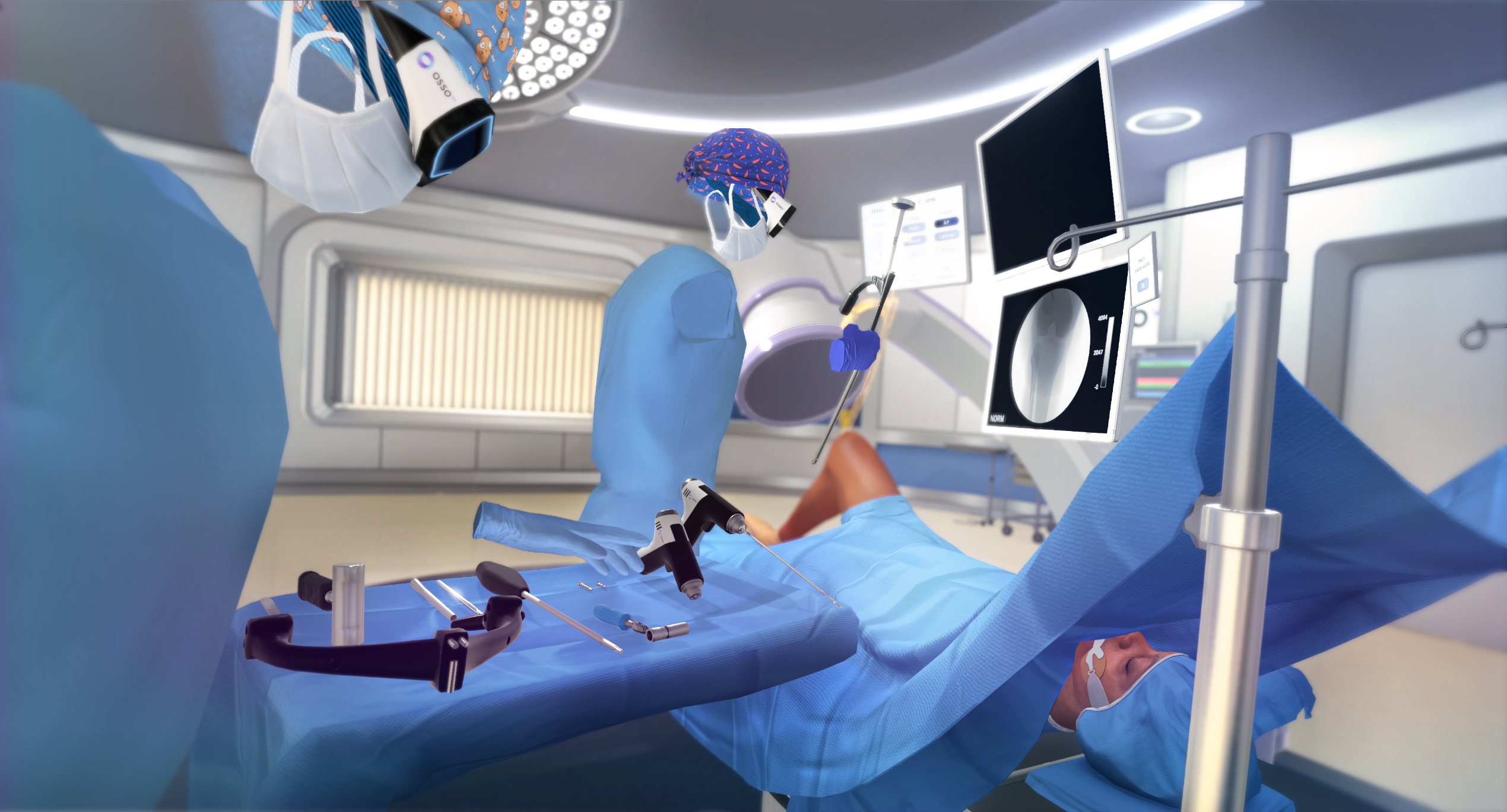This is an immersive, high-fidelity virtual reality (VR) surgical training simulation designed to teach and assess the intramedullary nailing procedure for tibial fractures. This interactive, step-by-step experience allows trainees to practice the procedure in a realistic, hands-on environment, improving technical skills, spatial awareness, and procedural confidence without risk to patients.
This is an immersive, high-fidelity virtual reality (VR) surgical training simulation designed to teach and assess the intramedullary nailing procedure for tibial fractures. This interactive, step-by-step experience allows trainees to practice the procedure in a realistic, hands-on environment, improving technical skills, spatial awareness, and procedural confidence without risk to patients.
Key Features of the VR Simulation:
- Fully interactive surgical environment, including patient positioning, fluoroscopic guidance, and step-by-step instrumentation handling.
- Realistic bone and soft tissue simulation, allowing users to experience the tactile feedback of drilling, reaming, and nail insertion.
- Fluoroscopic imaging system, providing real-time virtual X-ray views to ensure proper nail alignment and screw placement.
- Dynamic haptic feedback and force interactions, replicating the resistance of bone and soft tissues during the procedure.
- Stepwise guidance and performance assessment, including:
- Patient preparation and incision marking
- Entry point identification and guidewire placement
- Reaming and nail insertion
- Interlocking screw placement for fixation
- Closure and post-procedural evaluation
- Adaptive difficulty settings, allowing users to toggle between guided learning and assessment mode, ensuring skill progression.
- Performance analytics dashboard, tracking precision, efficiency, and decision-making, with automated feedback on technique and error detection.
This VR portfolio piece demonstrates the power of virtual reality in surgical education, offering a highly detailed, data-driven, and interactive training tool for orthopedic residents, trauma surgeons, and medical institutions aiming to enhance procedural proficiency in tibial fracture management.
| Color | White |
|---|
Category: Posters





